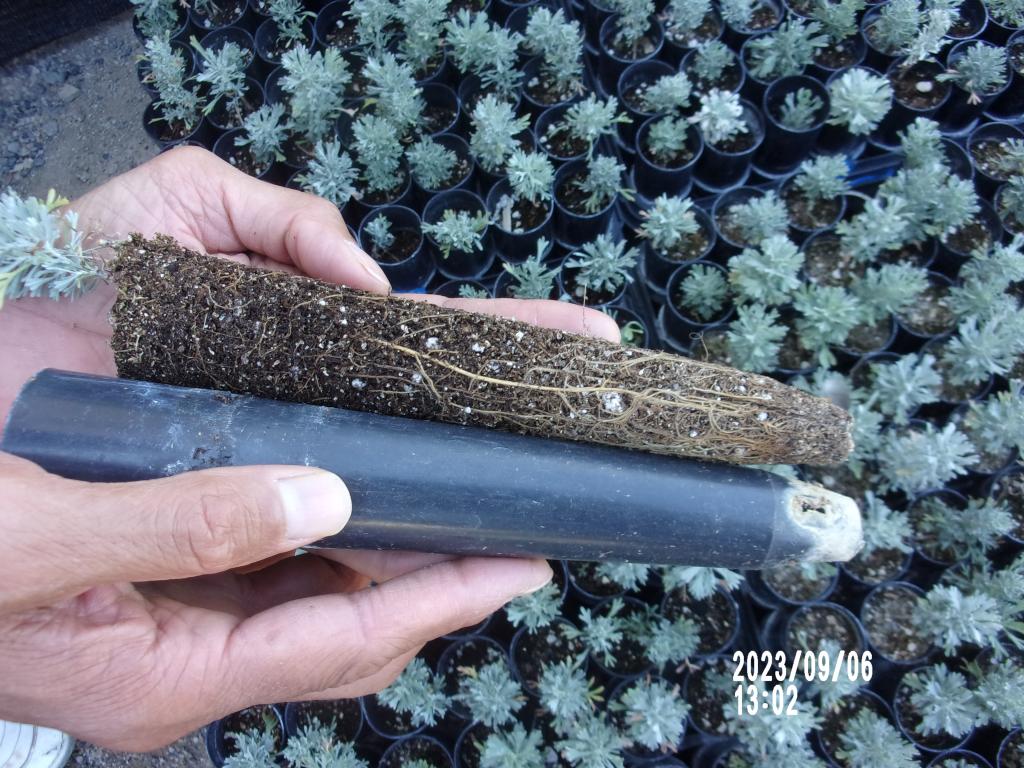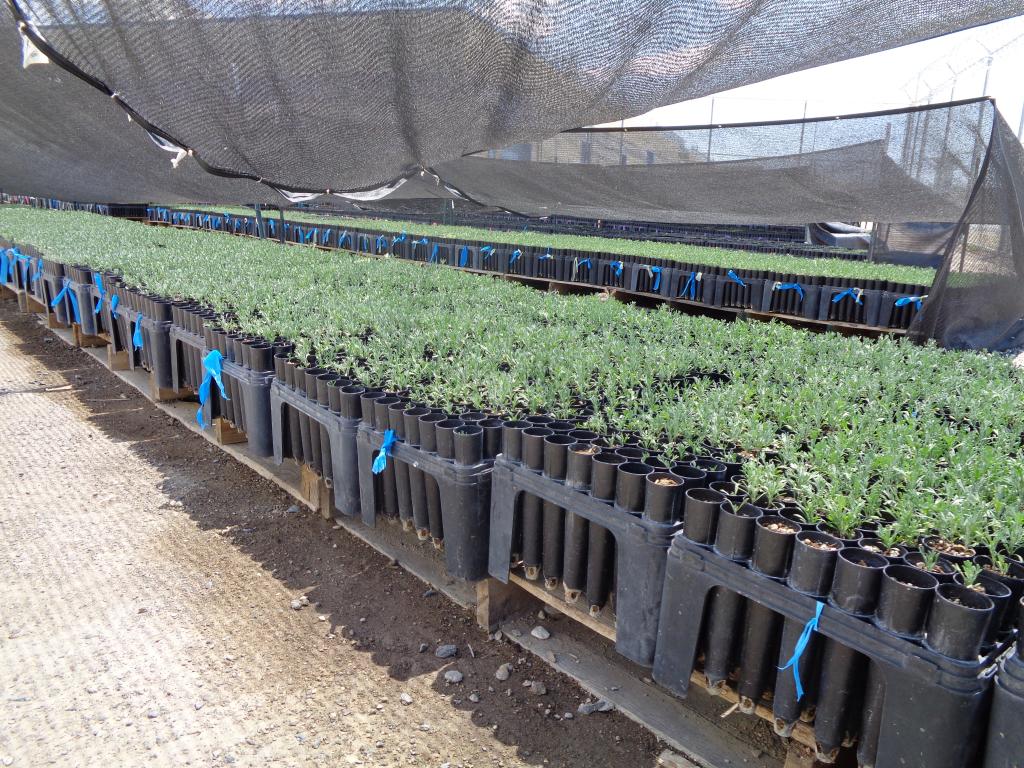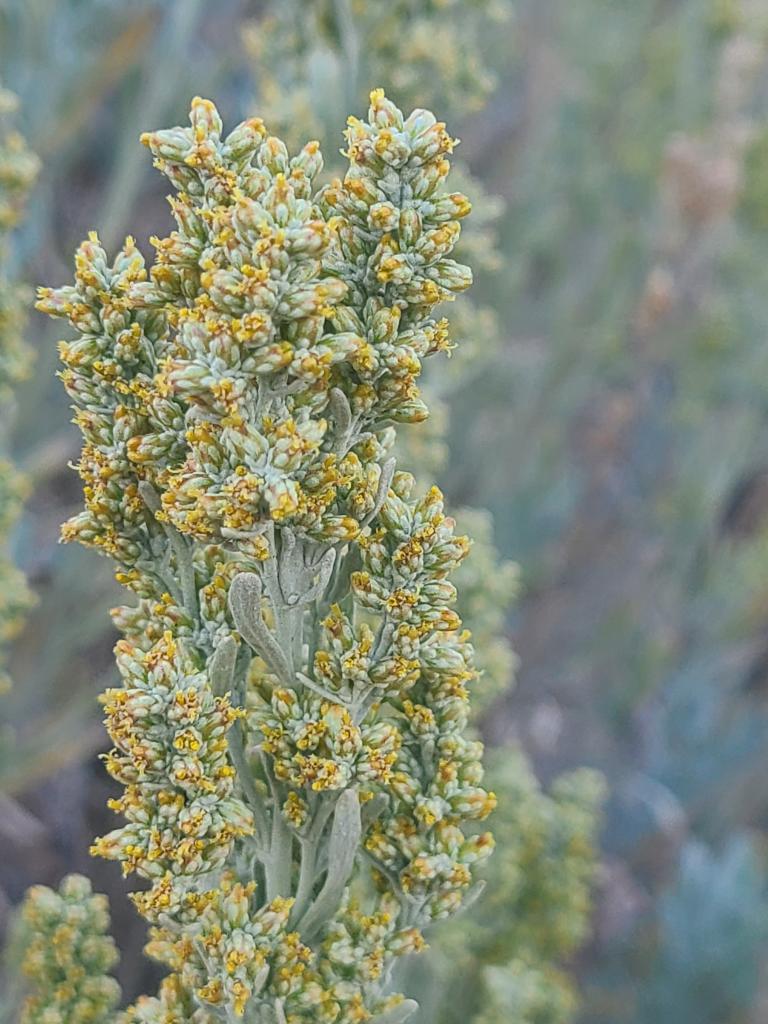By Shannon Campbell, October 2023
The Sagebrush in Prisons Project is a partnership between the Institute for Applied Ecology (IAE), The Bureau of Land Management (BLM), and various state and federal prisons in six different states to—that’s right—farm sagebrush! Adults in custody are hired to grow sagebrush and other native plants from seed to maturity. The crews at each prison mix soil, sow seeds, water, fertilize, manage pests, monitor soil pH and moisture levels, and tend to all of the plant care needs over spring and summer months. In the fall, when the plants have matured to about six inches tall, the Bureau of Land Management will plant the Sagebrush in disturbed wilderness areas.

This project is meant to provide job opportunities and horticulture experience to incarcerated people, as well as restore sagebrush habitat for the Greater Sage-grouse. This bird is a sagebrush obligate species, meaning they rely on sagebrush for every part of their life cycle. The nests and chicks are protected by large, mature sagebrush plants and the adults eat the sagebrush leaves and flower buds. Without sagebrush, the Greater Sage-grouse and over 350 other species of plants and animals would dwindle from the landscape. Over half of the historic sage-grouse habitat has disappeared from increased intensity of wildfires, invasive plants, energy expansion, and overgrazing by cattle. This program not only helps put sagebrush back on the landscape, it also provides incarcerated people with a way to give back to their community by conserving wildlife. One crew member at the Lovelock Correctional Center said, “This program means a lot to me because it is a way to help all of those animals that depend on these plants to survive. I learned to be patient for the good of the plants.”

This season, crews at the Lovelock Correctional Center (LCC) and Northern Nevada Correctional Center (NNCC) produced 120,000 Wyoming Big Sagebrush plants for the Bureau of Land Management’s Humboldt Field office in Winnemucca, Nevada. In October and November, the sagebrush will be planted along the Nevada-Oregon border. These plants will help restore Sage-grouse habitat in the scarred landscape of the Martin Fire. This was the largest wildfire in Nevada’s history, which burnt over 420,000 acres of sagebrush habitat in 2018. Each year, the Sagebrush in Prisons Project continues to provide healthy plants for the Martin Fire restoration efforts.

The Sagebrush crew at the Federal Correctional Institution in Herlong, California produced 20,000 Wyoming Big Sagebrush and Antelope Bitterbrush plants this season. The bitterbrush is for the Backcountry Hunters and Anglers Association, and will be planted in the Hallelujah Junction Wilderness Area in California. This area is an important migration route for mule deer, pronghorn antelope and elk, which rely on bitterbrush as a food source in winter months. The habitat in this area has been devastated by various wildfires over the past 20 years. The sagebrush grown at this institution will be planted by the Bureau of Land Management’s Eagle Lake Field Office outside of Susanville, CA in various wildfire scar locations.
Thank you to the Bureau of Land Management and the Backcountry Hunters and Anglers Association and all of the prison staff and incarcerated crew members for making these projects possible in Nevada and California!
